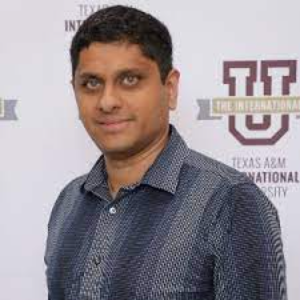Title : Nanomaterial as catalysts in photoelectrochemical energy conversion and hydrophobic recovery
Abstract:
Natural plant-based dye-sensitized solar cells (DSSCs) gained significance due to their low cost, non-toxicity, environmental friendliness and availability. Plant dyes serve as a sensitizer, which absorbs sunlight and converts solar energy into electric energy with the aid of titanium oxide nanomaterials who serve as catalysts. The motivation for this work is to explore natural pigments from non-toxic plants, which can survive in dry conditions, and abundant in nature, with simple and inexpensive extraction methods. Further, upon extraction investigate methods for fabricating DSSCs from the combination of natural plant-based dye extracts. Two types of natural plant-based dyes extracted from Cladode and a leaf of Aloe Vera are used. The working electrode was fabricated from Titanium dioxide (TiO2 ) nanopowder, which provides a wide band-gap and serves as an electron transporter and carbon coated Fluorine-doped Tin Oxide (FTO) conductive glass served as the counter electrode. When light is incident on the plant-based dye, the electrons from the dye are absorbed by Titanium dioxide nanomaterial and further leading to the charge separation via the electrolyte. Optical properties of the dye were investigated with UV–Vis Absorption Spectroscopy. Fourier Transform Infrared Spectroscopy (FTIR) technique was used to study the surface chemistry of the plant dyes before the fabrication of DSSCs. In conclusion, the DSSC sensitized by the Cladode offered the highest conversion efficiency of 0.740%, amongst the other DSSCs, due to the presence of stronger adhesion promoters in the chlorophyll dye, providing a better charge transfer. We overcame the problems in mixing the dyes by designing a DSSC using two dyes on a side-by-side configuration, reporting a conversion efficiency of 0.50%. Overall, natural plant-based dyes as sensitizers of DSSCs were promising because of their low-production costs, simple and energyefficient assembly methods, and environmental friendliness. We will also discuss current work on the wearable solar cells. Additionally, the ability to modify the contact angle of water on silicon has applications ranging from thermal management of electronics to miniaturized biomedical and microfluidic devices. The motivation for this part of the work is to explore simpler oxygen plasma treatments that can both expand the overall range of contact angles and ensure long-term behavior. Through simple variation in the thickness and oxygen plasma treatment, we were able to integrate both hydrophobic and superhydrophobic surface on the same sample. The variation in contact angle arises from choosing nanowires of different lengths as catalysts. Nanowires are grown by metal assisted chemical etching and are (1-3) D in shape. We characterize the surfaces using a combination of X-ray photoelectron spectroscopy (XPS), contact angle measurements, and ellipsometry. Taken together with contact angles available from similar treatment on bulk silicon, it is possible to lithographically create regions of diverse contact angles, from ~5º to ~149º.


